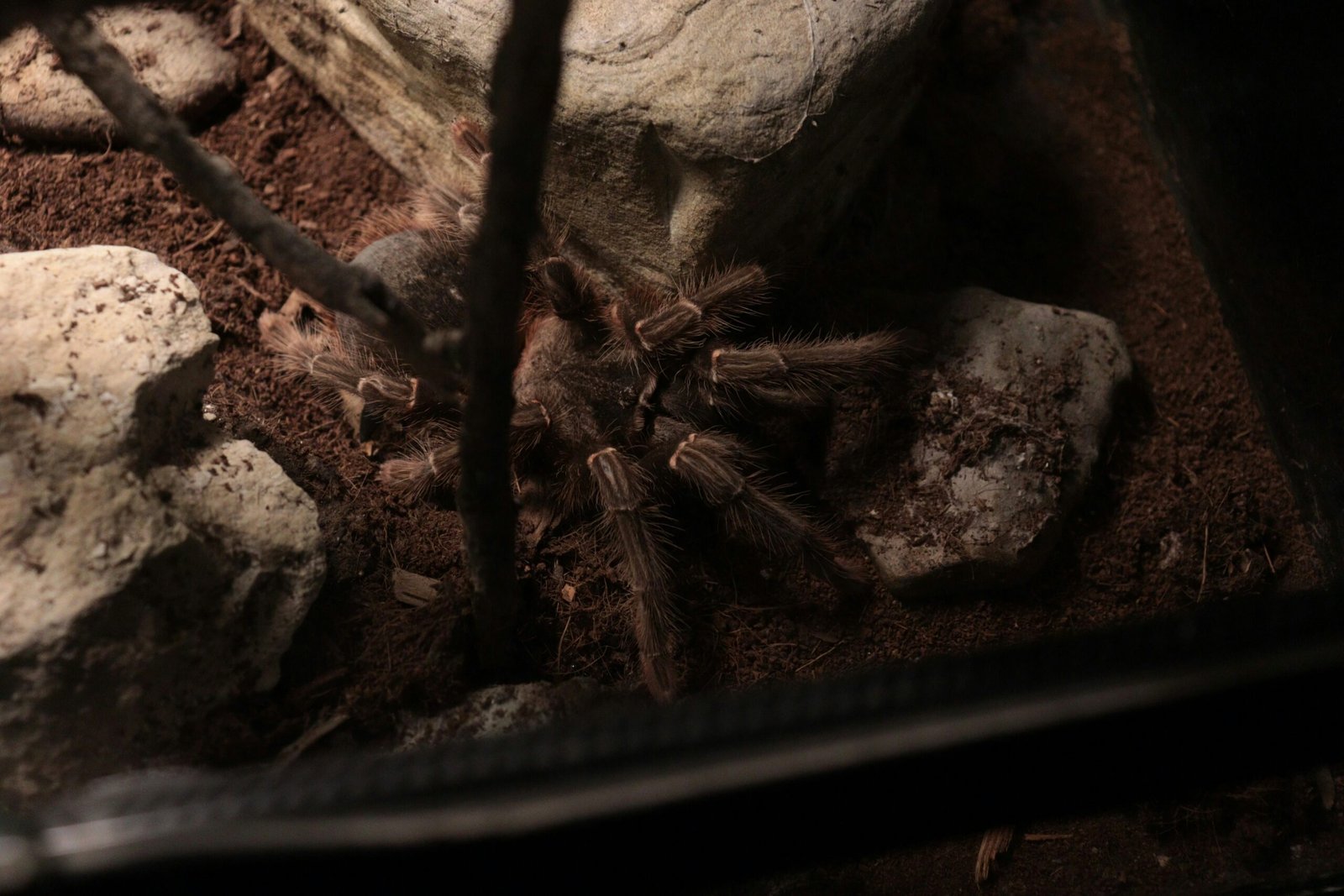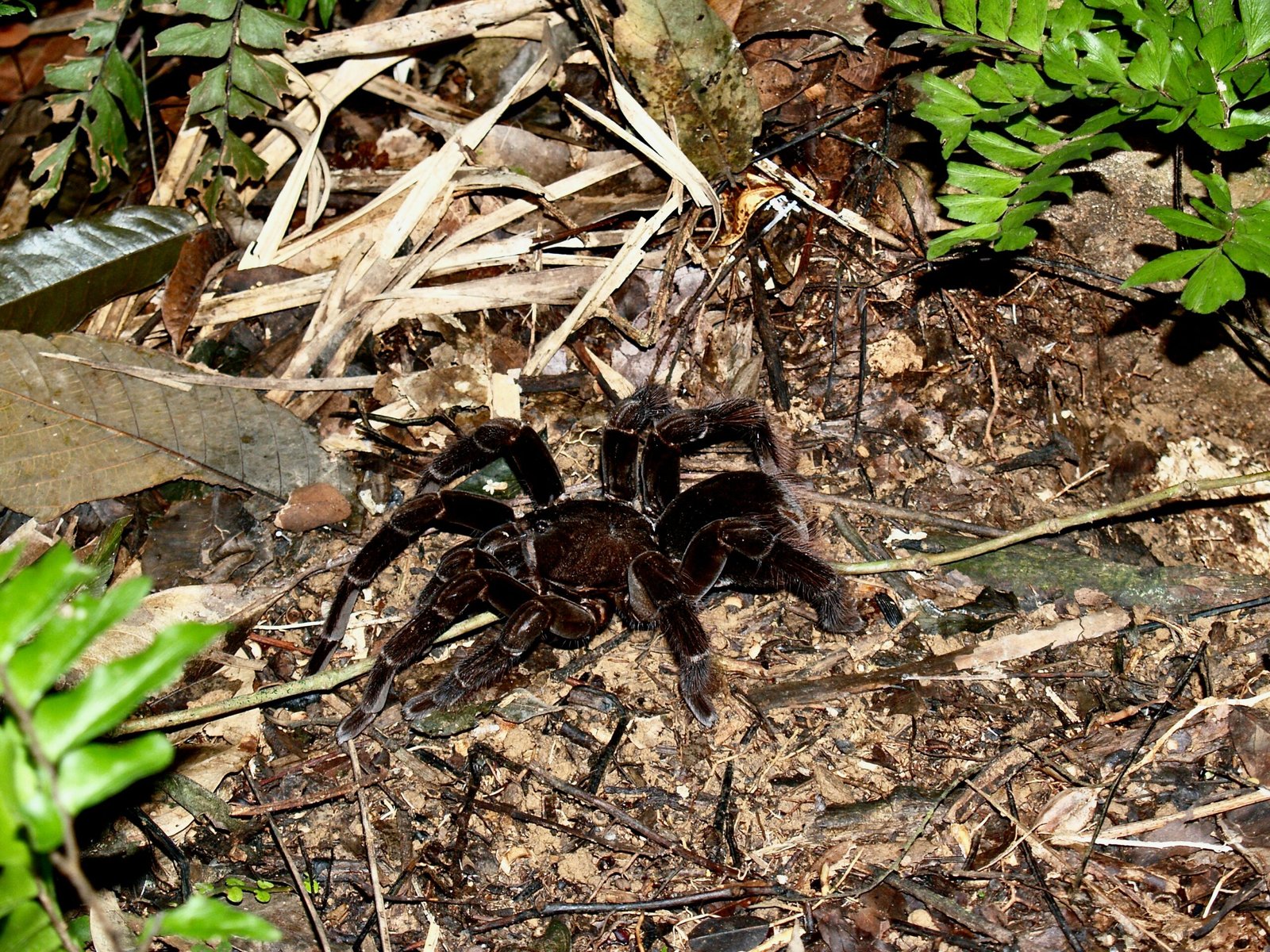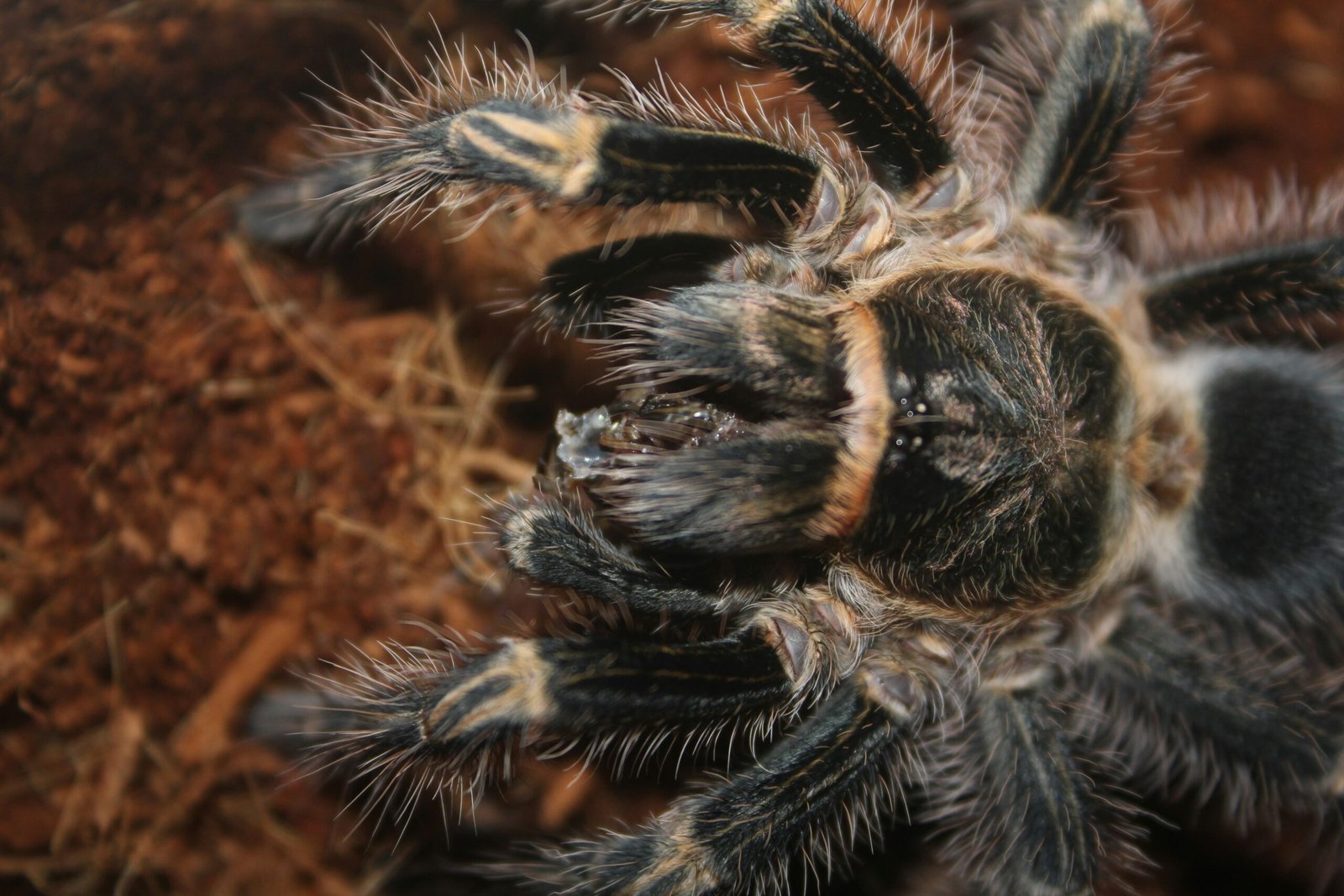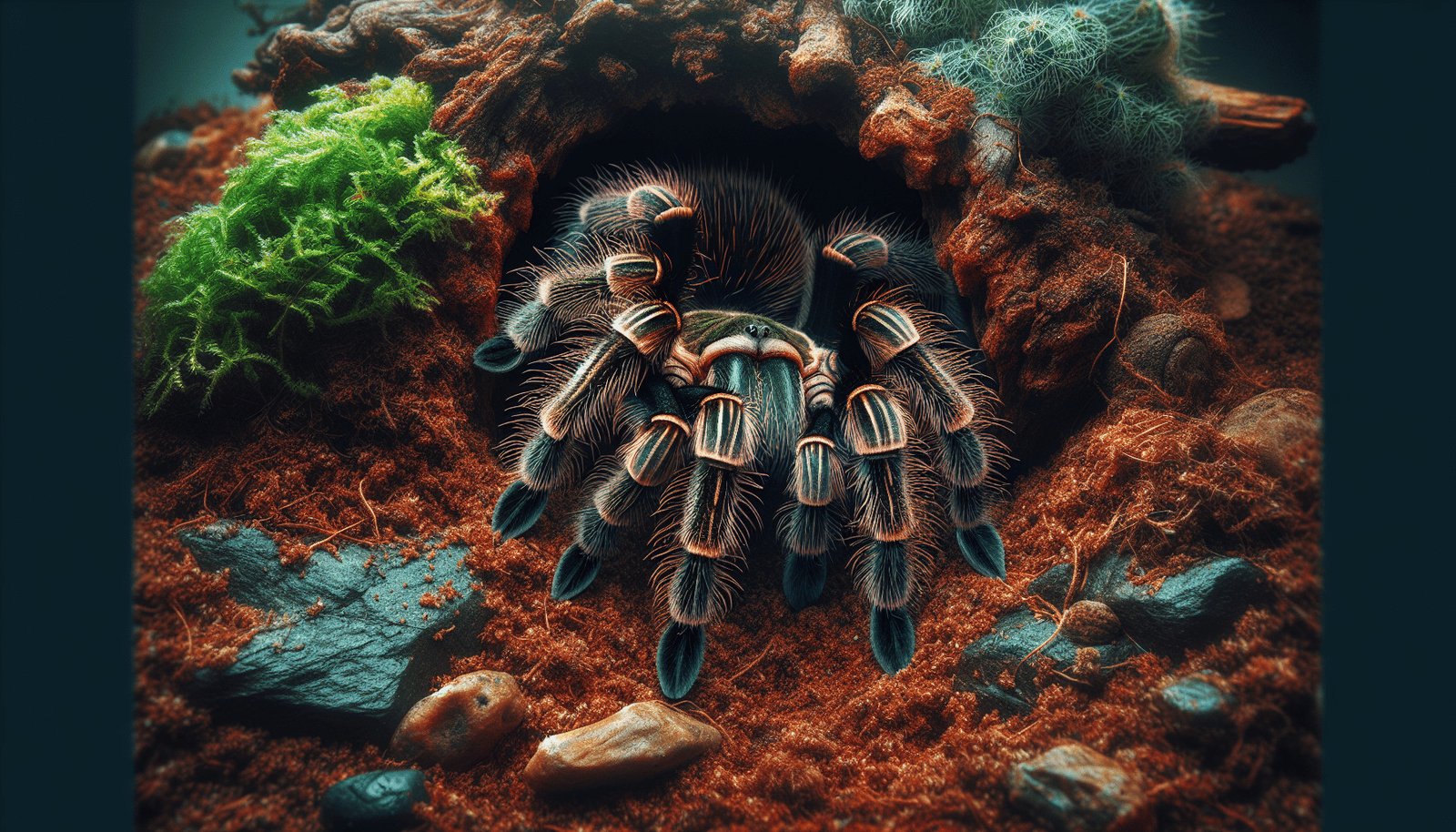Have you ever wondered how often you should change your tarantula’s hide? As a tarantula owner, you probably have a lot of questions on your mind, especially when it comes to creating the perfect environment for your arachnid companion. In this article, we’ll explore the recommended frequency for changing your tarantula’s hide, delve into the factors that influence how often you should do this, and provide you with practical guidelines to ensure your tarantula lives a healthy and stress-free life.

Understanding the Importance of a Hide
Tarantulas are fascinating creatures. They have specific needs when it comes to their habitat, and a hide plays a crucial role in their overall wellbeing. A hide serves as a sanctuary where your tarantula can retreat, feel secure, and enjoy some privacy. It’s their comfort zone and safe haven, mimicking the nooks and crevices they would naturally seek out in the wild.
Why Do Tarantulas Need a Hide?
Tarantulas are naturally solitary and reclusive creatures. In the wild, they spend much of their time hidden in burrows or under rocks and logs. A hide provides them with a similar sense of security in captivity. It’s essential for reducing stress and encouraging natural behaviors like molting and hunting.
Types of Hides for Tarantulas
There are various types of hides you can use for your tarantula’s enclosure. These can range from simple options like coconut shells and half logs to more elaborate models designed to mimic natural rocks. Some tarantula owners even create custom hides using clay or other safe materials. The key is to provide a space that offers both concealment and comfort.
| Type of Hide | Description |
|---|---|
| Coconut Shell | Natural and eco-friendly, offers a snug, dark retreat. |
| Half Log | Provides a semi-open space, allowing easy observation. |
| Ceramic Rock Hide | Durable and often aesthetically pleasing. |
| Custom (Clay) | Tailored to fit specific needs or aesthetic preferences. |
Factors Influencing How Often to Change a Tarantula’s Hide
Not all tarantulas or enclosures are the same, and several factors come into play when determining how often you need to change a tarantula’s hide. It’s essential to keep these in mind to make informed decisions for your specific situation.
Species of Tarantula
Different species of tarantulas have varying requirements for their hides. Some prefer to have multiple options in their enclosure, while others may hardly use them at all. Researching your specific tarantula species will help you understand their natural habitat preferences, shedding light on how often their hide might need attention.
Age and Size
The age and size of your tarantula can influence the frequency of hiding changes. Younger tarantulas, particularly those in the rapid growth phase, will molt more frequently and may benefit from a clean environment. Larger, adult tarantulas may place less emphasis on changing hides unless they deteriorate or become unsuitable otherwise.
Enclosure Environment
The overall setup of the enclosure, including the substrate, humidity, and temperature, plays a crucial role in how often the hide should be updated. A clean and well-maintained enclosure reduces the need for frequent changes, while environments prone to mold or pests may require more regular attention.
Behavioral Changes
Behavioral changes are excellent indicators of when a tarantula’s hide might need changing. If your tarantula starts spending less time in its hide, seems agitated, or stops using it altogether, it could be a sign that the hide is not meeting its needs.

How Often Should You Change a Tarantula’s Hide?
In general, a tarantula’s hide doesn’t need to be changed unless there’s a specific reason to do so. However, regular assessment and cleaning help maintain a healthy living environment. Let’s explore some guidelines:
Routine Check-Ups
Regular monitoring of the hide and enclosure allows you to detect any issues early. Check for signs of wear, damage, or unpleasant odors. Mold growth, an accumulation of waste, or pest infestations are reasons to replace or sterilize the hide.
Scheduled Cleaning
If the hide is part of a substrate replacement or full enclosure cleaning, then it’s reasonably logical to examine and change the hide if necessary. This might happen anywhere from several months to a year, depending on the overall cleanliness and structure of the enclosure.
Indicators for Immediate Change
There are circumstances where you may need to change the hide immediately. These include:
- Visible Damage: If the hide is damaged or can potentially harm your tarantula.
- Odor and Contamination: Presence of unpleasant smells or visible contamination.
- Pests: Infestation of mites or other unwanted pests.

Best Practices for Maintaining Your Tarantula’s Hide
Maintaining your tarantula’s hide is not just about knowing when to change it, but also about how to manage it effectively so it lasts longer and serves its purpose well.
Regular Cleaning
During regular enclosure cleaning, inspect the hide thoroughly. Remove old substrate or debris, and if possible, rinse it with water or use mild cleaning solutions safe for pets. If the material allows, a light scrubbing can eliminate unwanted residues.
Proper Enclosure Maintenance
Ensure that humidity levels and temperature within the enclosure are appropriate for your tarantula’s species. This reduces moisture-related problems like mold, which can necessitate more frequent changes.
Rotating Hides
Some owners choose to have multiple hides available and rotate them to give their tarantula variety and keep the environment engaging. This also allows for thorough cleaning of one while another is in use.
Monitoring Health and Behavior
Keep an eye on your tarantula’s health and behavior. Any changes, such as increased aggression or refusal to eat, might indicate discomfort with their hiding space or overall environment.

Creating the Ideal Environment for Your Tarantula
Understanding how to manage a tarantula’s hide goes hand in hand with creating a suitable environment for your pet. For those striving to optimize their arachnid’s habitat, consider these recommendations.
Substrate Selection
Choose a substrate that can manage moisture well, such as coconut fiber, which is often recommended for its ability to retain humidity without molding easily. This complements the hide by keeping it in a well-maintained environment.
Providing Adequate Space
Ensure your tarantula’s enclosure is an appropriate size, offering both space to roam and multiple places to hide. Overcrowding a small area with too many objects might make it difficult for your tarantula to feel comfortable.
Enrichment and Engagement
Consider adding other elements like branches, leaves, or tunnels to simulate a more complex environment. This can provide mental stimulation, making your tarantula’s habitat not just a safe space but one that encourages natural explorative behavior.

Conclusion
When it comes to tarantula care, understanding the role of a hide and its maintenance involves taking into account several factors like species requirements, environmental conditions, and behavioral cues. While you might not need to change the hide often, being diligent about assessing and maintaining it ensures your tarantula enjoys a stress-free, healthy life. With this knowledge, you’re better equipped to provide top-notch care, keeping your tarantula happy and thriving in its enclosure.